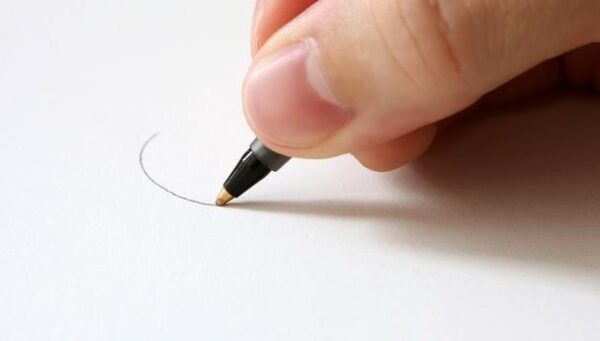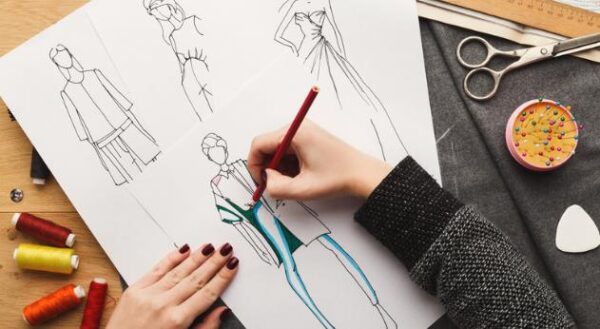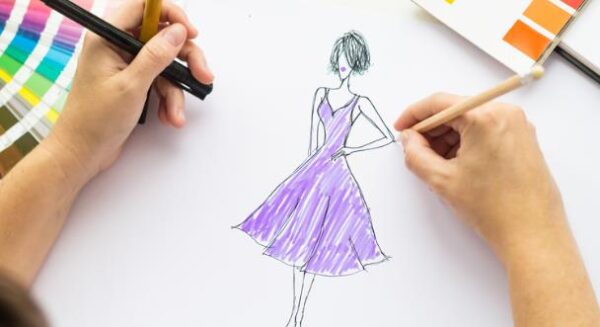Introduction
Drawing a dress is like capturing elegance and creativity on paper. Whether you’re a beginner venturing into the world of fashion illustration or a seasoned artist looking to refine your skills, mastering the art of drawing dresses opens up a realm of possibilities. From the graceful flow of evening gowns to the structured allure of cocktail dresses, each sketch tells a unique story. In this guide, we’ll unravel the secrets behind bringing stunning dress designs to life through step-by-step instructions and expert tips. So grab your pencils, and let’s dive into the enchanting world of fashion illustration!
How to Draw a Dress? – A Step-by-step Guide
Gathering Your Materials
Gathering your materials is the first step towards creating a stunning dress illustration. Ensure you have all the essentials on hand before diving into your artistic endeavor. Graphite pencils of different grades will allow you to achieve varying levels of shading and detail in your sketch. An eraser, preferably kneaded, is a must-have tool for correcting mistakes and refining your drawing with precision.
Drawing paper or a sketchbook provides a sturdy surface for your artwork to come to life. Consider using colored pencils or watercolors if you wish to add vibrant hues to your design, elevating it from simple lines to a masterpiece of color and texture. For straight lines and precise measurements, having a ruler on standby can be beneficial in achieving clean edges and accurate proportions in your dress sketch.
With these materials at your disposal, you are equipped to embark on the creative journey of bringing elegant dresses from imagination to paper with finesse and flair.
Understanding Dress Types and Styles
Dive into the world of dress styles and discover the endless possibilities for your next drawing project. Whether you’re captivated by the elegance of flowing evening gowns or intrigued by the sophistication of structured cocktail dresses, each style offers a unique canvas to showcase your artistic skills.
Pay close attention to details like silhouette, neckline, and hemline when exploring different dress types. The graceful flow of an A-line gown versus the tailored structure of a sheath dress can inspire varying creative approaches in your sketches.
Experiment with diverse styles to challenge yourself artistically and expand your repertoire. From ball gowns fit for royalty to sleek mini dresses perfect for a night out, every design presents an opportunity to explore new techniques and refine your illustration abilities.
Embrace the versatility of dress styles as you embark on this creative journey. Let your imagination run wild as you immerse yourself in the intricate world of fashion illustration.
Sketching the Basic Outline
When diving into sketching a dress, establishing the basic outline sets the foundation for your design. Start by drawing the torso with a vertical line, ensuring symmetry, then add horizontal lines to define the waist and hips. This initial framework will guide you in shaping the overall look of your dress.

Moving on to outlining the skirt is where you can get creative based on your chosen style. Whether it’s a full, flowing gown or a sleek pencil silhouette, sketching out this part adds personality to your design. Experiment with different shapes until you find what resonates best with your vision.
The upper part of the dress is equally essential – sketch out the neckline and shoulders to complement the overall aesthetic. These details help bring balance and harmony to your creation, enhancing its visual appeal.
Remember, starting with a simple outline allows room for adjustments as you progress through adding more intricate details later on in your drawing process.
Adding Details to the Dress
Now that you have sketched the basic outline of your dress, it’s time to add those intricate details that will truly bring your design to life. Think about the seams and zippers – they not only provide a sense of realism but also showcase your attention to detail.
Consider incorporating ruffles and pleats into your dress; these elements can create texture and movement, adding depth and visual interest to your sketch. Experiment with different styles of sleeves based on the type of dress you are drawing – whether it’s short sleeves for a casual look or long flowing sleeves for an elegant touch.
Remember, these small details can make a significant impact on the overall appearance of your dress design, so take your time refining them until you are satisfied with how they complement the silhouette you’ve created.
Creating Texture and Patterns
Creating texture and patterns in your dress design is where you can truly make your artwork come to life. By using light pencil strokes, you can mimic the luxurious feel of fabrics like silk or satin, adding depth and dimension to your drawing.
When it comes to incorporating patterns, think about how they interact with the dress’s flow and folds. Whether you opt for geometric shapes or delicate floral designs, ensure they enhance the overall aesthetic rather than overpowering it.
Remember that details matter – even subtle changes in texture or pattern can elevate your dress sketch from good to outstanding. Take your time with this step, focusing on small intricacies that will set your illustration apart.
Experiment with different techniques until you find what works best for bringing a sense of realism and style to your dress drawings.
Shading and Coloring Your Dress

When it comes to shading and coloring your dress sketch, think about where the light is coming from. This will help you create depth by adding darker shades on the opposite side of the light source. By understanding this concept, your dress will look more realistic and three-dimensional.
If opting for color, choose hues that work harmoniously together. Start with a light base and layer gradually to achieve richer tones. Experimenting with different shades can bring vibrancy or subtlety to your design, depending on the effect you want to achieve.
Shading techniques play a crucial role in making your dress illustration come alive. Remember to be consistent with your shading style throughout the drawing for a cohesive look. Whether using pencils or watercolors, mastering shading techniques will enhance the overall visual impact of your creation.
Final Touches
After you have sketched the basic outline, it’s time for the final touches to bring your dress design to life. Take a step back and review your drawing with a fresh perspective. Look for any areas that may need adjustments or enhancements.
To add depth and dimension, focus on enhancing the darker areas of your dress slightly. This will create contrast and make certain parts stand out more prominently. Cleaning up any stray lines can help sharpen the overall look of your design.
Consider adding a background to complement your dress illustration. A simple backdrop can make your design pop and provide context for the garment. Whether it’s a soft gradient or a detailed setting, choose a background that enhances rather than distracts from your beautiful creation.
Remember, the final touches are what elevate your drawing from good to great. Take your time with these adjustments to ensure that every detail is polished and perfected before showcasing your finished piece.
Common Mistakes to Avoid
When drawing a dress, one common mistake to avoid is overlooking proportion errors. It’s crucial to regularly check that the proportions of your dress align with those of the human body. This helps create a more realistic and visually appealing design.

Another pitfall to steer clear of is over-detailing too soon. Instead, focus on laying down the basic shapes first before diving into intricate details. Building your sketch gradually allows for a better flow and structure in your artwork.
Additionally, don’t ignore fabric behavior when drawing dresses. Different fabrics drape and flow uniquely, so pay attention to how each material should fall on the body. Understanding fabric characteristics adds realism and depth to your dress illustrations.
By being mindful of these common mistakes, you can elevate your dress drawing skills and produce more polished and professional-looking designs.
Conclusion
Mastering the art of drawing a dress is not only a valuable skill but also a fulfilling creative endeavor. By following this step-by-step guide, you can enhance your fashion illustration techniques and bring your designs to life on paper. Remember to gather the right materials, understand different dress styles, sketch the basic outline, add details, create texture and patterns, shade and color effectively, and finish with final touches.
Avoid common mistakes like proportion errors, over-detailing too soon, or ignoring fabric behavior to ensure that your dress drawings are realistic and visually captivating. Practice regularly to refine your skills and develop your unique style in fashion illustration. Drawing dresses is a delightful challenge that allows you to unleash your creativity while mastering the intricacies of garment design. Enjoy the process of bringing beautiful dresses from imagination to paper!
